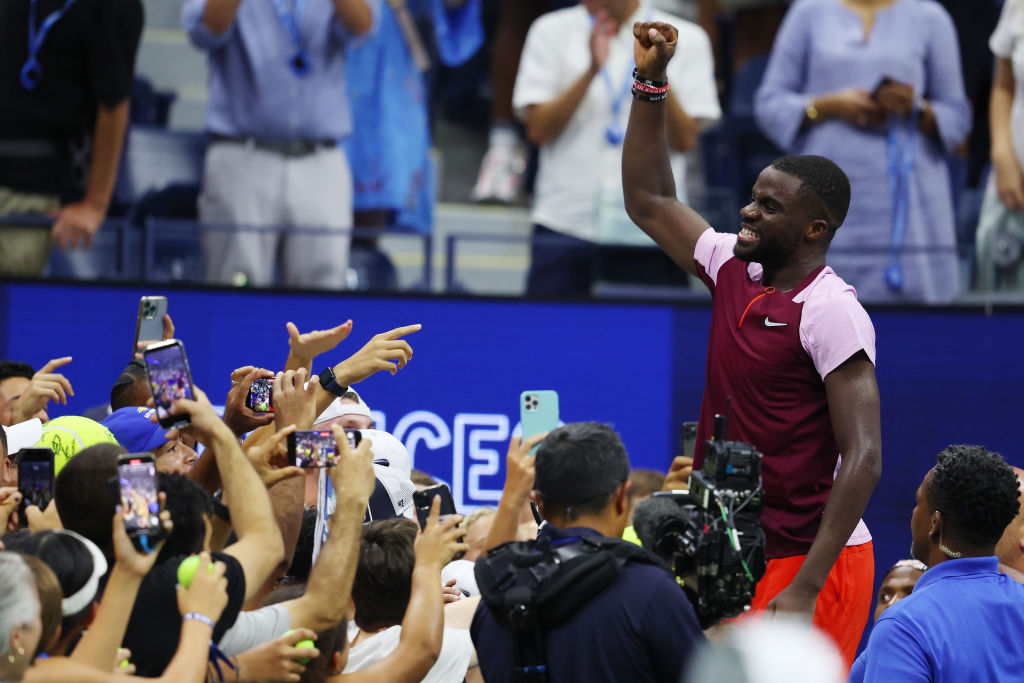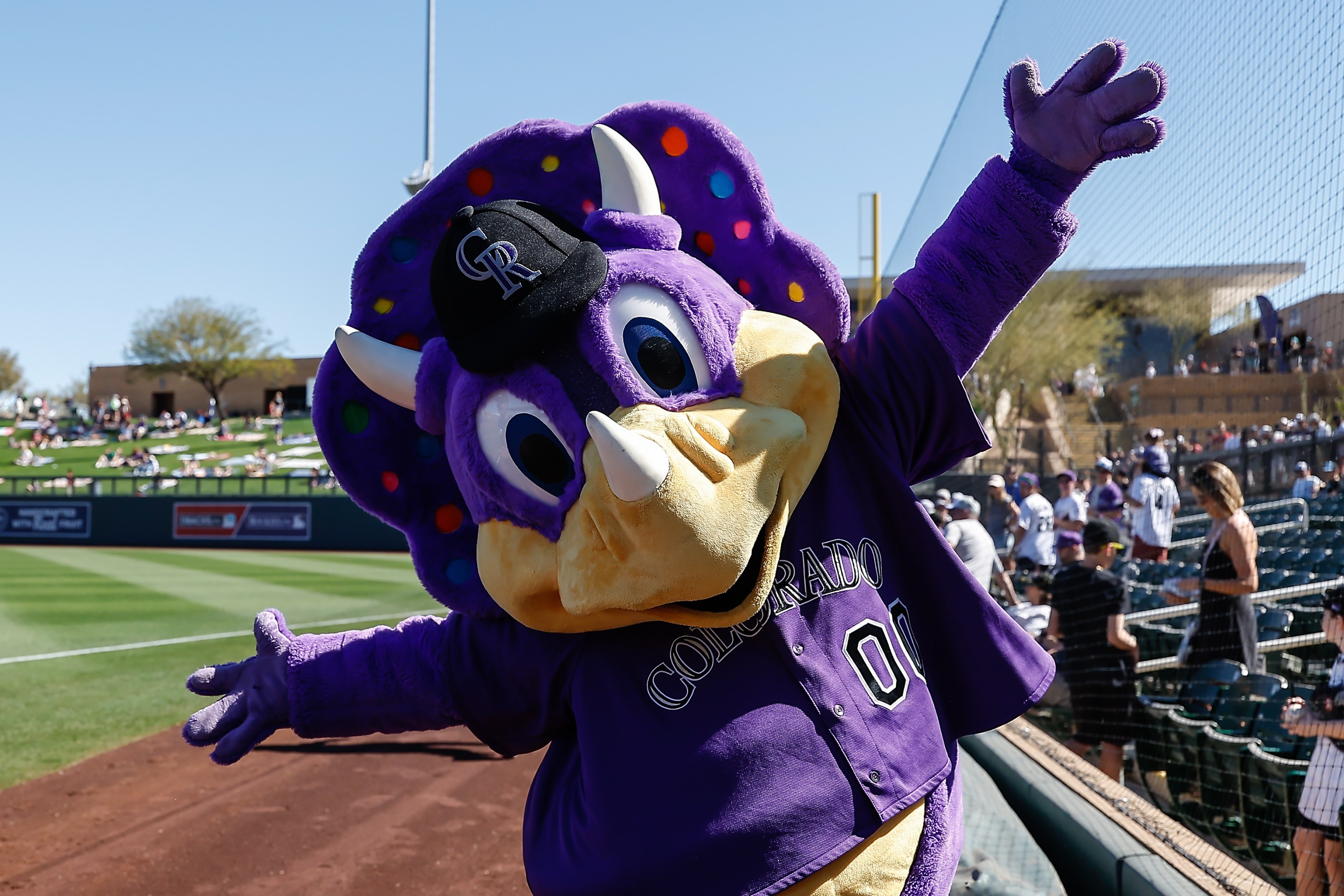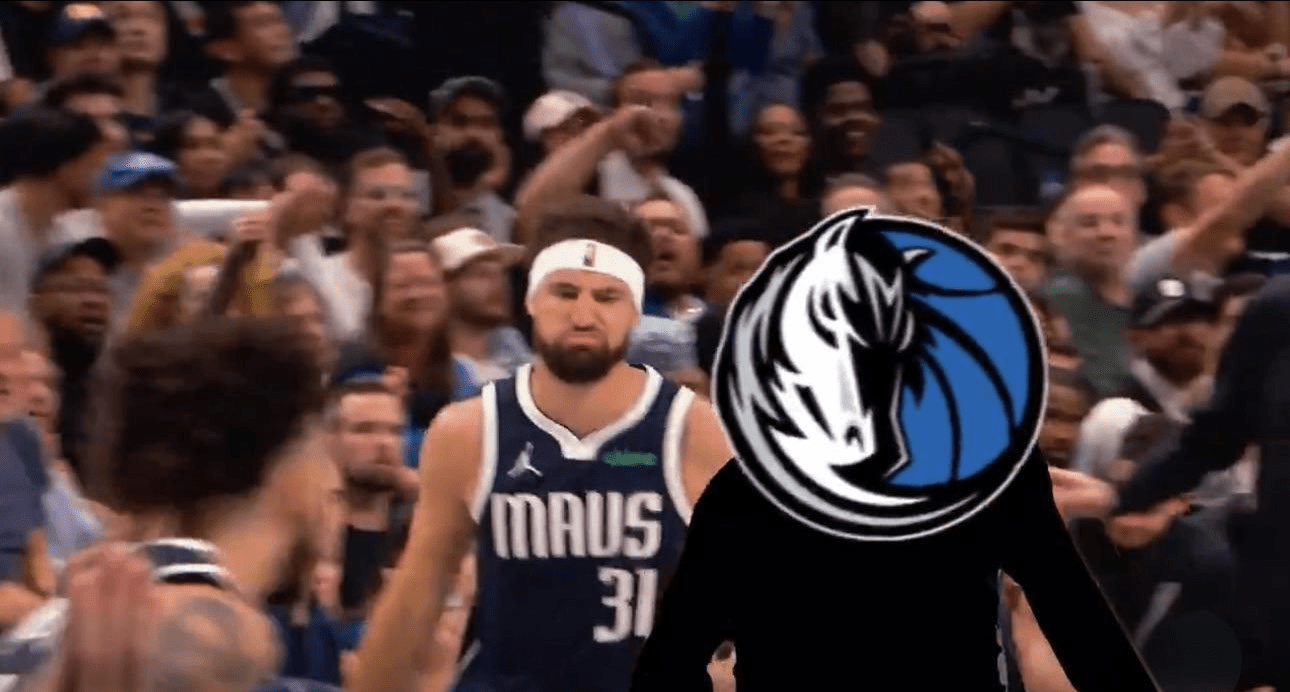Frances Tiafoe, who might have the greatest gift for on-court physical comedy of anyone in men's tennis, has a go-to bit when the match is running especially hot. Instead of celebrating or catching his breath after he closes out a tight game, he keeps sprinting, sprinting, sprinting off the court, straight to his chair, then parks his ass down for the changeover, all while the opponent is still caught in the daze of the rally. Tiafoe beelines to that chair like it's a drop shot that needs hunting down. I've seen him do this a dozen-odd times over the last five years, and I don't get sick of it.
Even the most optimistic Tiafoe enthusiast didn't expect to see their man unveil this running gag in Arthur Ashe Stadium while leading Rafael Nadal in the second week of a Slam. But there he was, unmistakably scooting his way into the commercial break, as the No. 22 seed broke the No. 2 seed in the heat of their third set Monday evening, en route to a 6-4, 4-6, 6-4, 6-3 fourth-round win. It was the biggest win of Tiafoe's career, and it came in his characteristic style.
Tiafoe's been on an uneven journey since he broke out in the majors with a five-setter on this same court in 2017, against Roger Federer, in a more dramatic albeit jankier affair. He was then a 19-year-old enigma, radiating clear shot-making talent and speed but hampered by some equally clear technical and tactical holes. It’s funny to go back and reread the questions I had in 2018, which largely persist: “Which wrinkles in his unusual game will be straightened out, which will continue to hinder him, and which will just be embraced and refined until they are good and odd enough to just beat the opposition? Can you actually win like this, consistently?” The years since have offered mixed but often exhilarating answers to those questions, and Tiafoe has had his downswings and stagnant stretches. Last October in Vienna he pulled off a series of splashy wins that seemed to suggest he'd rounded a corner, but then this season passed in relative quiet.
Even when the tangible results didn't always reflect it, Tiafoe progressed in small and meaningful ways. He streamlined the noisy swing on his forehand and cut out the costly shanks. His first serve has been honed to a sharp point; he boomed one at 138 mph during his match against Nadal. With the shovel backhand that's increasingly en vogue among top players—cf. Nick Kyrgios, Cameron Norrie—he generates huge pace with admirable consistency. He has also worked on his body, first beefing up, then slimming down. Tiafoe's coach Wayne Ferreira steeled his zoomer by banishing his phone from practice and conditioning sessions, forcing him to run without music and cultivate his focus. As the ancient proverb goes, it's impossible to beat Nadal with a mind hung up on TikTok. Tiafoe referenced this growth in his post-match comments on Monday. "It's the mental capacity," he said. "Rafa is there every point. I've been known to have some dips in my game at times, where it's like you're watching, what's that? That was my thing, match intensity."
In this match, sustained intensity was no issue for Tiafoe, who dispatched an opponent he hadn't landed a scratch on in their two previous meetings. He hadn't even produced a single break point in their five previous sets. Nadal's movement and serving were both a notch below his typical standard; both might have something to do with the abdominal injury he picked up this summer. "I was not able to hold a high level of tennis for a long time. I was not enough quick on my movements. He was able to take the ball too many times very early, so I was not able to push him back," the Spaniard said after the upset. “I was not able to create the damage that normally I used to do." But even mid-shelf Nadal has been enough to snuff these kids' dreams for years and years, and the weight of his reputation often seems to do half the damage before the first ball's even been served. Tiafoe had entered the match with a different mindset. "I came out not giving Rafa all the respect—I came out to win a tennis match in front of you guys," he said in his on-court interview with James Blake, who happened to be the last American to beat Nadal in a major, at this tournament in 2005.
It's a little premature to expect a deeper run out of Tiafoe; the field is still riddled with some of the best talents of his generation. But he has a lot to be proud of in terms of match hygiene. He hit 49 winners to 28 errors. He only got half his first serves in but managed to win a healthy 78 percent of those points, and on his second serve—often a liability, especially against a returner as ferocious as Rafa—he secured 60 percent of points. He stayed on top of Nadal, refusing to let his heavy topspin push him off the baseline, and didn't squander opportunities on the put-away short balls. It was the kind of clean win over a clearly superior opponent that has generally eluded Tiafoe in the majors over the last few seasons, and it puts him into the quarterfinal for the first time since the 2019 Australian Open. He next faces Andrey Rublev, who he beat in five sets at last year's U.S. Open.
Tiafoe, a Wizards fan—bless his heart—invited Bradley Beal into his box for this match. Beal wasn't the only NBA player to take notice, however. There was also the guy whose celebration Tiafoe has borrowed on occasion:
CONGRATS Young King!!! You earned it! @FTiafoe 🙏🏾✊🏾🤎👑 https://t.co/QQ0Jn7Lotp
— LeBron James (@KingJames) September 5, 2022
Even after the biggest win of his career, Tiafoe kept up his comedic timing. "That's my guy," he said after the match. "So to see [LeBron] post that, I was like, 'Do I retweet it as soon as he sent it?' I was like, 'You know what, I'm going to be cool and act like I didn't see it and then retweet it three hours later.'"





